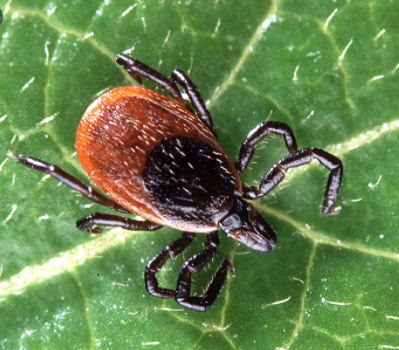THUNDER BAY — Active surveillance for blacklegged ticks that have the potential to spread Lyme disease will expand to areas outside Thunder Bay starting next year.
Ticks can infect humans and animals with the bacteria that causes Lyme disease and a variety of serious health impacts.
The Thunder Bay District Health Unit already conducts active surveillance for ticks, using the proven method of dragging a white cloth sheet across the ground, to which ticks attach themselves and are easily spotted.
In 2023, monitoring in the Thunder Bay region will grow significantly with the support of the Canadian Lyme Disease Research Network.
Thunder Bay is one of the newest additions to its list of 37 "sentinel regions" being monitored across the country as part of CLYDRN's Canadian Lyme Sentinel Network.
The system was created to permit the direct observation of changing Lyme disease risk in the country and to serve as a platform to integrate environmental and epidemiological risk data for research.
Funding is provided by the Canadian Institutes of Health Research and other sources
Ken Deacon, coordinator of the Thunder Bay District Health Unit's vector-borne disease program, said Thunder Bay's inclusion in the program means that active monitoring for blacklegged ticks will take place next year in five rural areas.
The sites, which were selected in consultation with Lakehead University's Department of Health Sciences based on their suitability as habitat for tick populations, include:
- Sleeping Giant Provincial Park
- Hazelwood Lake
- Upsala
- Cloud Lake
- Rabbit Mountain off Belrose Road
Blacklegged ticks have never been identified in the first four spots, but the Rabbit Mountain site is what Deacon described as "our guaranteed location" for them, based on several years of ongoing active surveillance.
On Oct. 25, a public health inspector working with a student located 18 blacklegged ticks at Rabbit Mountain in a period of only 45 minutes.
Deacon called that extraordinary, saying the ticks were "super-active" for whatever reason – possibly the recent spell of mild weather.
"It just goes to show that you have to be at the right place at the right time. If you happen to be walking your dog or going for a hike, this could be very unfortunate for you," he said.
All 18 ticks have been shipped to a federal lab in Winnipeg for testing for Lyme disease.
"At this time of year, most people think they are safe, but ticks are active right up to 4 C. Today we're talking about 15 C," Deacon said in a Monday interview.
He emphasized that personal protection remains necessary unless there is snow on the ground.
If blacklegged ticks are collected at any of the new monitoring sites, Deacon said it will be an indication the population is spreading.
In the case of Sleeping Giant Provincial Park, "It's under a flyway, so there are migratory birds going through, and there's a good chance they will be dropping off blacklegged ticks."
Roman McKay of the School of Epidemiology and Public Health at the University of Ottawa said the ticks are spreading northward across eastern Canada in association with climate and environmental change, with migratory birds transporting them from endemic regions in the U.S. and southern regions of Canada.
